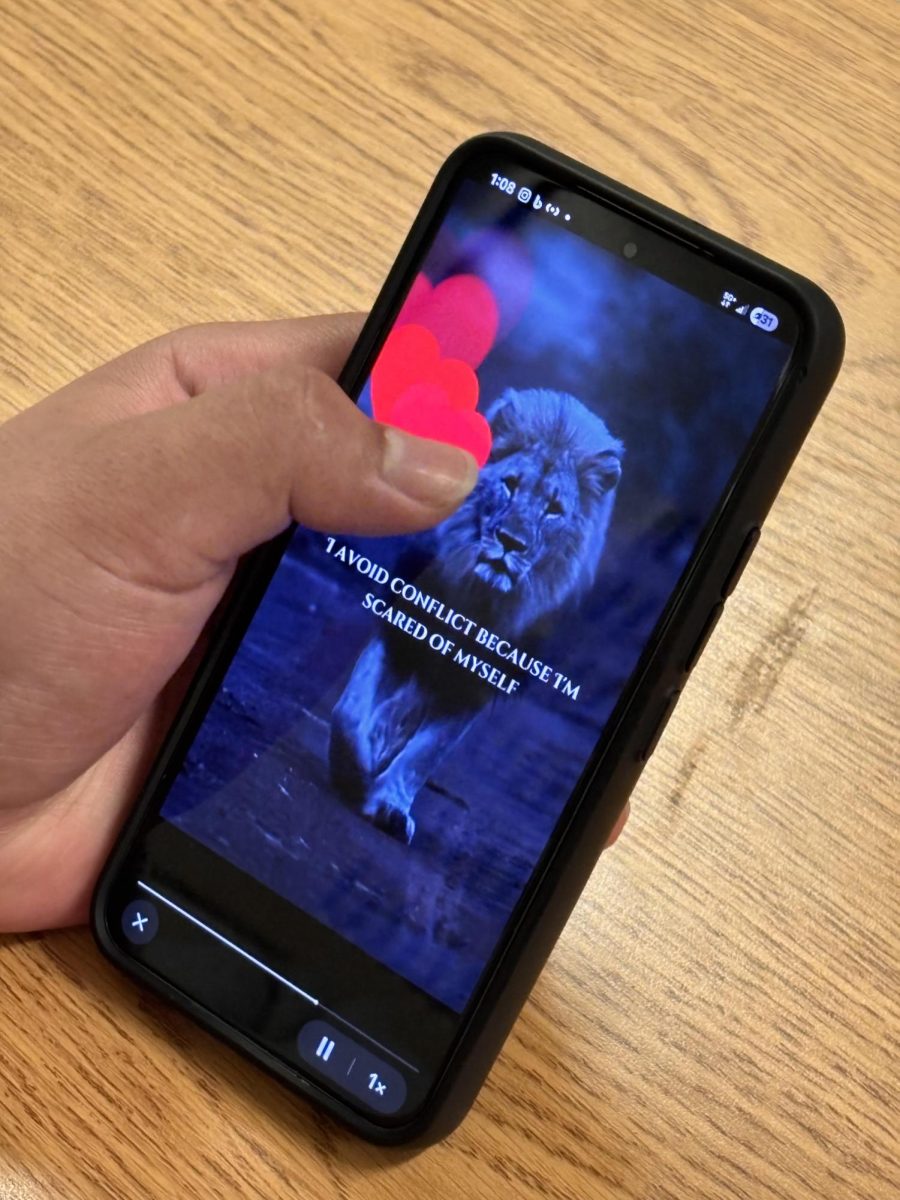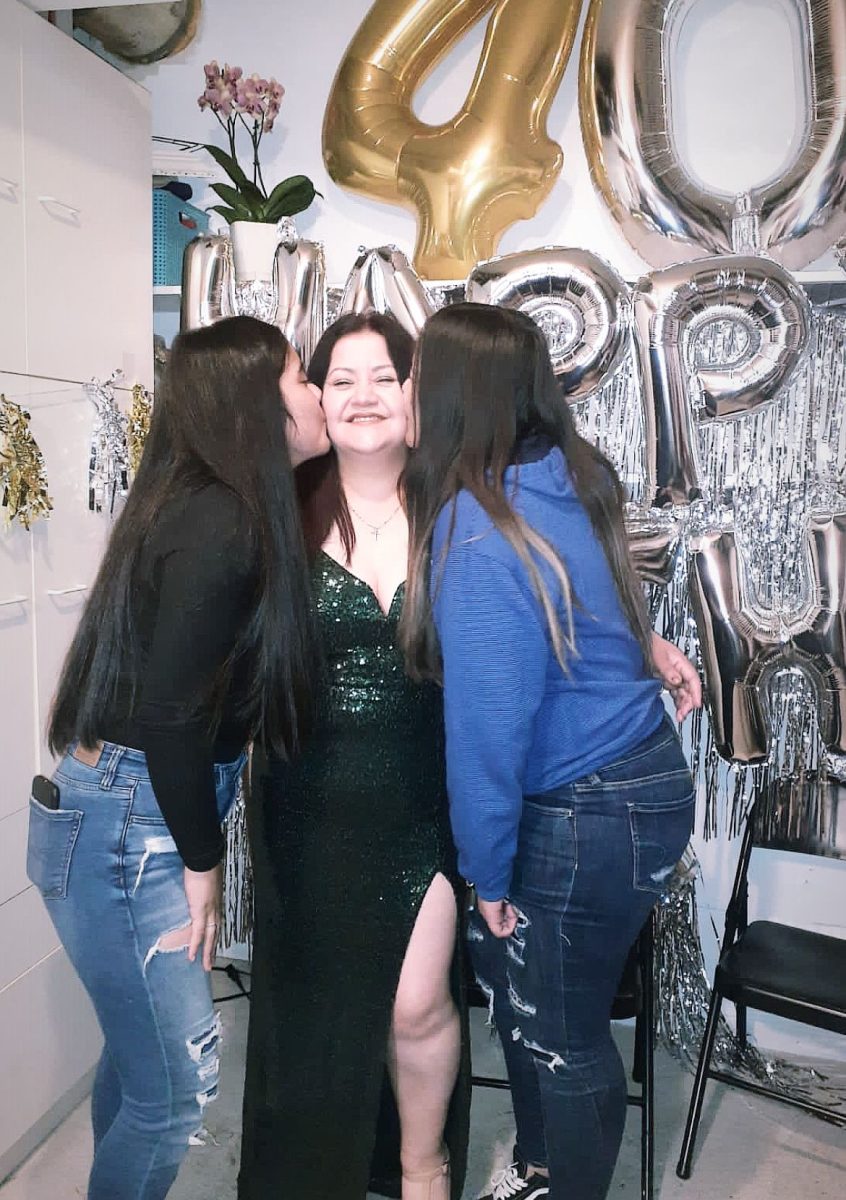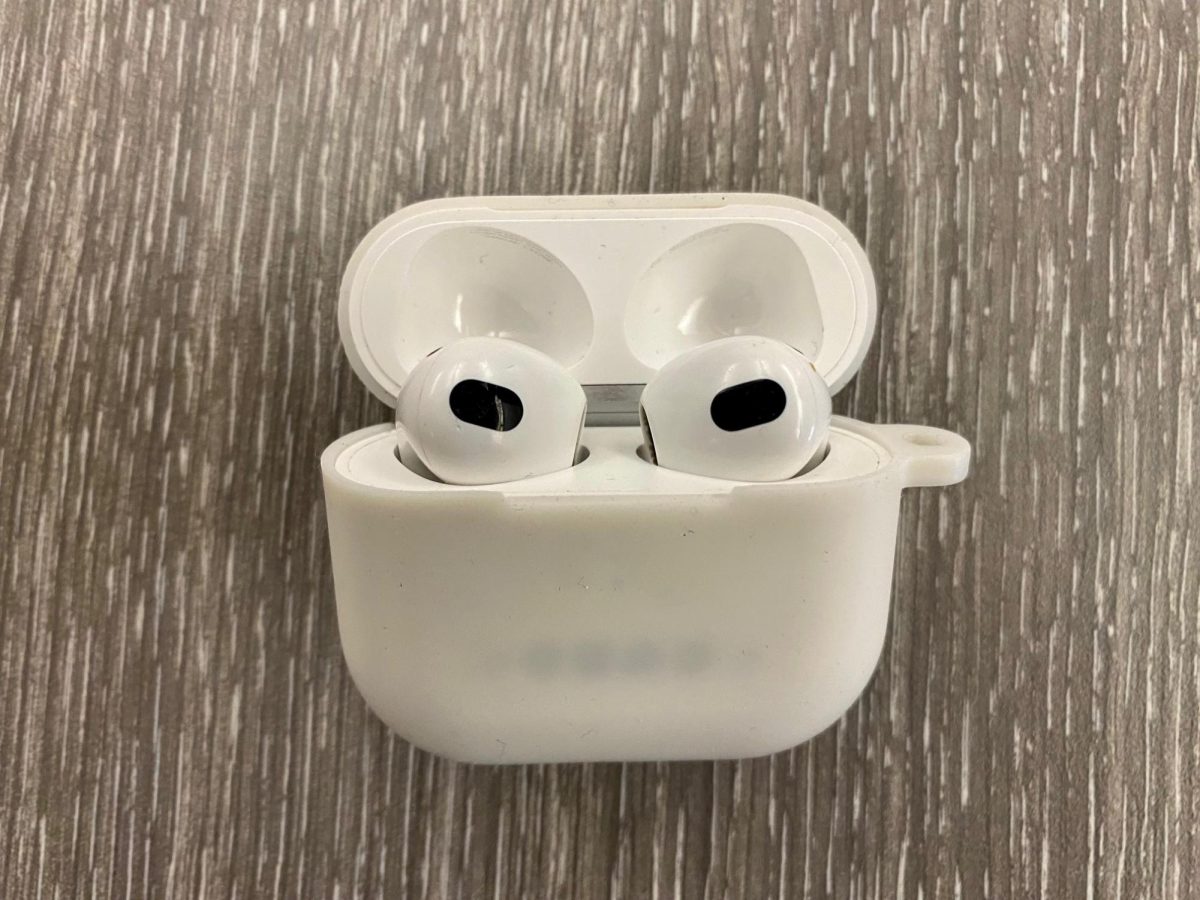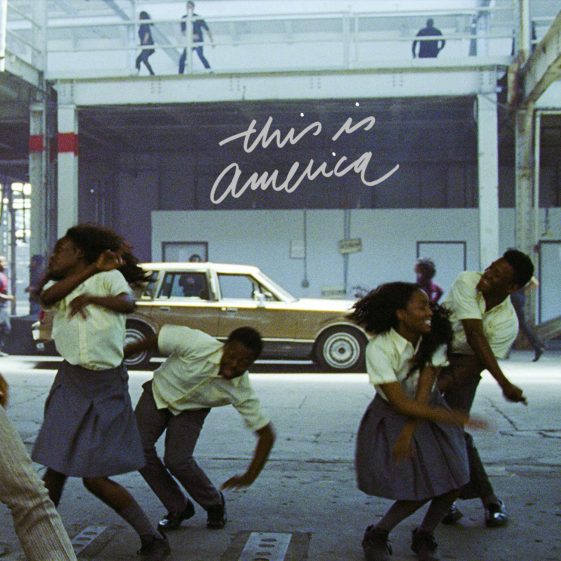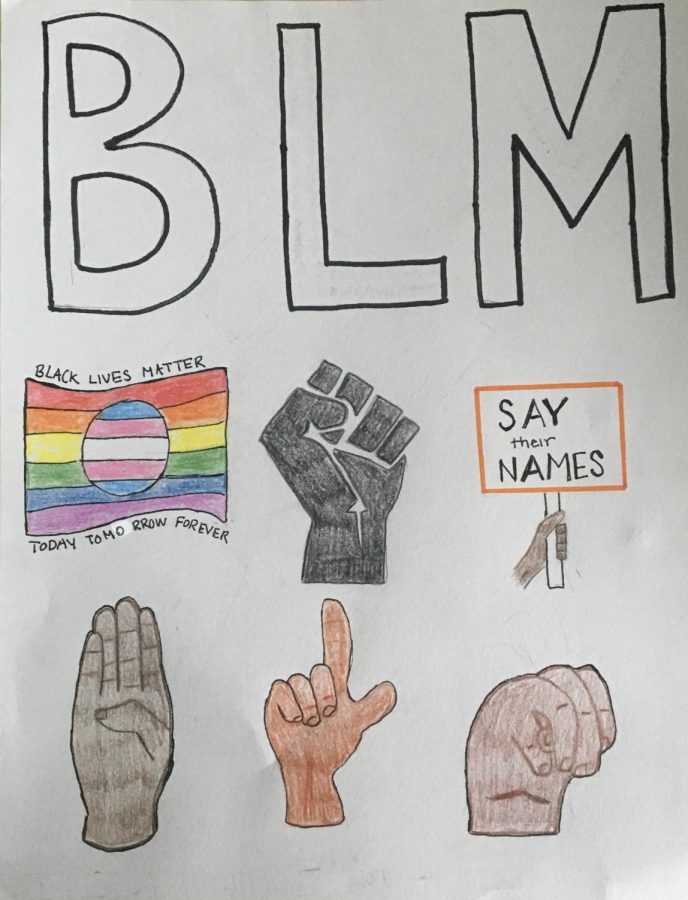The party was already in full swing when I stepped through that front door. I walked into the basement, greeting people as I passed by them. The lights in the basement were off when I entered, being replaced by a colorful dim coming from LED lights outlining the walls. The air in the room was hot, with people standing up dancing, kids playing beer pong with red solo cups on a ping pong table, and others lounging on a wrap-around sofa in the corner of the room. They were passing a vibrant, blue and purple, rounded-rectangular object with a mouthpiece that looked like that of a safety whistle on a back-pack. The device was getting passed around by the kids lounging on the couch. Each kid took a hit, inhaling from the mouthpiece for a few seconds or so, blowing a cloud of smoke in the air, and passing the device to the next person.
Three students, all of whom attend these parties, agreed to anonymously share their stories and experiences. Two San Rafael High senior girls, who wish to go by the pseudonyms Cathy and Shelby, and a SRHS senior boy, going by the pseudonym Logan for their privacy.
“It all started for me at, I want to say the end of sixth or seventh grade, with my friend’s older sisters. We would go into her room and steal her old ones and use them. But I didn’t start buying my own until freshman year,” says Cathy.
According to the FDA’s National Youth Tobacco Survey, 2.25 million high school and middle school students reported current use of tobacco products. (U.S. Food and Drug Administration, 2024).
The vaping industry exploded with the launch of Juul in 2015, but its effects are still somewhat unknown. And, with the sale of popular flavored Juul pods currently banned in California, teens are adopting other brands. “You have stuff like Juul pods where they get banned or whatever,” says Logan, “A lot of stuff like this just gets banned. Puff Bars were really big in middle school, and then they got banned and now you don’t see them at all anymore.”
Shelby’s first experience with vaping was in a bathroom at a high school football game sophomore year. But that’s not what got her started; “What got me started was my other friends, such as Cathy. I had kind of gotten into a habi
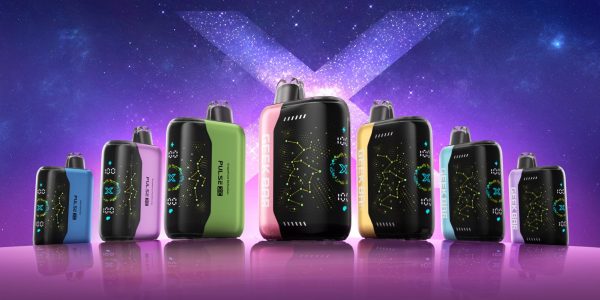
t, and at one point, Cathy gave me one of hers to keep because I would use it so much when I was with my friends,” she says. That’s where the habit really started to develop, when she had her own. “Ever since then I’ve just pretty much been getting my own,” Shelby adds.
Now, keep in mind, you are required to be 21 years of age to purchase e-cigarettes in the state of California. All three of these students are definitely not 21.
“When I was younger, I’d buy them through Snapchat, and now you can find a place like a little corner store, or a gas station,” says Cathy. But, in order to acquire vapes from a physical establishment, you have to have a fake ID, which Cathy and Shelby both do. “I’ve also gotten mine, when I was younger, through upperclassmen who used to get them for me and then I would just pay them,” adds Shelby.
The vapes they are purchasing are disposable, meaning they can be recharged, and might come with a predisposed “puff count” ranging from 15 to 20,000 puffs. But, once the substance that is being heated up runs out they are no longer usable. Each vape will cost you about $30, and for Shebly, Cathy, and Logan that lasts about a month, to a month and a half.
“Flum, Geek, and Nova are the most popular brands,” says Logan. “I would say Flum is the one that I always have,” adds Shelby. “And the most colorful,” Cathy points out, “They’re supposed to look very bright. They catch your eye.”
A key component of the addiction behind vaping is the flavoring. These flavors originated when Juul launched their own line of flavored pods, starting with four flavors in 2015 and reaching eight in 2018. Some of these flavors included mint, cremburle, mango, and cucumber. They were part of the reason that Juul got banned, because the general public felt like Juul was inadvertently targeting a youth audience. “While the campaign wasn’t targeted specifically at teenagers, a former senior manager [of Juul] says that he and others in the company are well aware it could appeal to them,” cited in a New York Times article published 2018 titled; “Did Juul Lure Teenagers and Get ‘Customers for Life?”
“Well for a while we would buy the clear flavored ones because they’ve tried to ban flavors before in California, so they would just sell the clear ones. It was a very mild flavor,” says Shelby. “You can barely taste it,” she adds. Cathy and Shelby admitted that they would still use the clear flavor, it had a similar appeal, but they would never crave it because it wasn’t an actual flavor. “It’s definitely less appealing to the eye because it’s not bright or fun, but yeah, I would still use it,” says Shelby.
Companies like Geek Bar and Flum have taken flavors to a whole new level. “There’s so many,” says Cathy. “My first flavor was banana ice,” she adds. The exact number isn’t apparent because the availability of flavors rotate from time to time. But, some of the more popular flavors include Blue Razz, Strawberry Banana, Lush Ice, Banana Ice, and Strawberry Kiwi. Puff Bar itself has over 30+ to choose from. Medical professionals are concerned.
“I would say the biggest focus on research has to do with the flavorance, the things that import the smell or the falor to the vapor,” says Dr. Naidus, a pulmonologist at Pulmonary Associates who completed his fellowship at UCSF.
“There’s some concern that those, when being aerosolized, may have potentially harmful consequences,” he adds. Some of the ingredients in products like Flum and Geek Bars include; diacetyl, acrolein, formaldehyde,propylene glycol and many more. The effects of these chemicals are pretty unknown. Dr. Nadius also points out that “supposed to your lungs being more damaged by this concoction, it’s even more of a behavior thing. They make the smoking ritual more attractive, and therefore easier to become addicted to long-term.”
One of main concerns that healthcare professionals and addiction specialists alike have is the effects of nicotine on adolescents.
It seems to be well known that e-cigarettes contain a considerable amount more nicotine than a regular cigarette. But if you weren’t aware; A 20mg/ml vape, with 40mg of nicotine, is the equivalent of smoking one or two packs of 20 cigarettes, in terms of the amount of nicotine consumed.
“But the thing is, [vaping] is way more normal, I guess, in a way,” says Logan. He adds, “You don’t really get affected by it as much as you do [with weed]. It feels like more of a routine. You don’t get as high, or at least they aren’t as volatile.”
The attraction to nicotine relies on different settings. An article published in 2019 from CNET titled, “Why vaping is so addictive, according to doctors” says, “It all depends on what environments, people, and physical actions and items a person has associated with e-cigarettes.”
Put yourself in a habitual situation, and you’ll crave the missing part of that situation. In our case, the missing component is e-cigarettes. “I get a craving when I’m drunk,” says Shelby, “I feel like when I’m in a better mood too. I don’t know why, but it’s like, if I’m sad, then it’s not as appealing to me,” Shelby says. Cathy responds with, “No, I get that. When I’m being social too. When I’m with people.”
“With nicotine, the addiction is so powerful that it creates even more dopamine surges, and what happens at a young age when you get that is, and we know this through newer science now, it closes off the prefrontal cortex of the brain,” says Ron.
Ron is a drug and alcohol counselor who worked at Living Reflections since 2009. He has been sober from drugs and alcohol, any mind altering substances for that matter, since 1999. He coached a youth program for kids for 28 years before counseling. It was an after-school sports program at Sun Valley Elementary and Neil Cummins School in Larkspur.
Although Ron left Living at Reflections, a rehab facility, less than a month ago, he has many certifications in the field of addiction. “I got my certification from the Breining Institute, which is a college for the advanced study of addictive disorders, and then a bunch of other certifications through Breining,” Ron says. “Eventually a masters credential, not degree, a credential, even though I was kind of lumped in with some PhD and masters in psychology in that group.” Ron was also certified through California alcohol drug treatment programs, making him a level two clinical supervisor.
When people speak of drugs, or alcohol, my mind thinks of addiction. Ron has been battling addiction, and helping others battle addiction most of his life. “The word addiction, the Latin term for it, means to adhere to. To surrender oneself to. And at a young age, exposing kids to nicotine and getting them addicted, actually alters the brain,” he says.
Nicotine is a stimulant. It constricts blood vessels so you don’t get as optimal blood flow when you have nicotine in your system. Matt Myers, the president of the Campaign for Tobacco-Free Kids wrote in 2017, “Juul delivers nicotine so much better than any comparable product on the market, [so] both the hopes of the e-cig fans, and fears of those concerned about e-cigs and kids, rise exponentially.”
All three seniors admitted they have never successfully quit. “I’ve taken breaks,” says Cathy. “I honestly don’t think I’ve tried to quit vaping before,” Shelby adds. Logan also indgules in smoking weed from time to time, and he points out that “the thing with weed is, when you’re doing it, it changes how you act. So it was easier to quit once I knew I didn’t need it.”
Logan went on a two month break from weed because he wanted to wait until 4/20. He says, “But with vaping, it doesn’t really make that difference in your daily life.”
According to both Dr. Nadius, and Ron, this can have a significant impact on your prefrontal cortex. “At 15, the frontal lobes are not fully developed. People make slightly more impulsive decisions and so forth, so I think engaging in any form of nicotine use by smoking or vaping increases your likelihood to become a long-term or chronic smoker, or vapor, a nicotine user,” says Dr. Naidus.
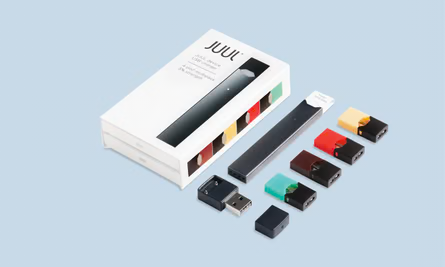 According to Ron, “That part of the brain is like the CEO. If you’ve ever seen pictures of primitive men they don’t really have a forehead. That’s the prefrontal cortex and is, in part, the reason those guys died out. They were the guys that went outside when there were sabertooth tigers and wooly mammoths and they didn’t save in the winters and eventually through evolution we developed a prefrontal cortex.”
According to Ron, “That part of the brain is like the CEO. If you’ve ever seen pictures of primitive men they don’t really have a forehead. That’s the prefrontal cortex and is, in part, the reason those guys died out. They were the guys that went outside when there were sabertooth tigers and wooly mammoths and they didn’t save in the winters and eventually through evolution we developed a prefrontal cortex.”
“Anyway, the ability to be able to use that is hampered, that’s one piece. The next piece is that when that is hampered and we’re using and becoming addicted, we are also highly prone to use other substances and that’s where that comes into play. ”
Nicotine disrupts the normal relationship between a neurotransmitter called acetylcholine (ACh) and the receptors that acetylcholine attaches to. Without that interruption, ACh plays an important role in muscle contraction, memory, cognition, and more.
“It goes to your head just for like, five seconds,” says Logan, “It’s a super short lived feeling, it doesn’t really make you feel any different. Sometimes you could feel a little lightheaded,” Cathy adds.
The three of them agreed that the strength of that feeling after taking a hit can depend on other factors too. “It depends if I eat earlier in the day,” says Logan, “Sometimes it’s more intense, sometimes it’s worse, but it’s kind of like a state of ‘wooey’. Like woo.”
When nicotine attaches to ACh receptors in place of ACh, it triggers a number of chemical reactions that result in temporary feel-good sensations. Those sensations include relaxation, alertness or focus, calmness, and euphoria. But those sensations are short-lived, usually subsiding within minutes, because your body removes the substance so quickly. Just two hours after ingesting nicotine, half will already be gone.
Emotions also play a large role in the craving of nicotine. High School, especially senior year, is a very stressful time for teens.
As you’re trying to hold on to your last moments in high school, you are also studying for AP classes, deciding what college to attend, figuring out what your relationships with friends and partners are going to look like in the near future, and all of that can be really stressful. The thought your whole little bubble that you live in will be changing is a tough pill to swallow.
“If e-cigarettes make you feel better when you feel sad, stressed or otherwise emotionally uncomfortable, and you use e-cigarettes as a coping mechanism, you’ll begin to turn to your e-cigarette whenever you feel those uncomfortable emotions,” stated in the previous CNET article.
According to Dr. Nadius, once a person reaches 15 or 16 their body is essentially 85% developed. “Once you’re 18, most people are at the end of puberty, and there’s not a lot of ongoing development or maturation of the body” he says, “I wouldn’t say that a 16-year-old’s lungs are going to be more susceptible to damage than a 40-year-olds if you start smoking at 16.”
So essentially, there isn’t a difference in physical harm to lungs of the respiratory system between adults and teens. In fact, E-cigarettes were designed to be healthier in terms of physical damage to your body compared to cigarettes. That was their whole purpose.
Juul originated from two Stanford students, Adam Bowen and James Monsees, who were a part of a product design program in 2003, and decided to join forces for their end of the year master thesis. They were both smokers since their teens, and they wanted to create a safer alternative to smoking. But, E-cigarette companies struggled with the design and functionality of their products. In the early 2000’s, big tobacco still controlled the smoking industry. E-cigarettes were a $1.7 billion a year business in 2013, which was a small fraction of the $90 billion cigarette business at the time. Their products were too clunky, or complicated to assemble, and sometimes even looked too similar to an actual cigarette. Another problem these companies like NJoy, the industry leader at time, were facing is that users felt their products weren’t delivering the same hit cigarettes did.
That’s when Juul stepped in; “The company found its current design, a seek stick that looks like a flash drive, and largely stumbled onto a new way of delivering nicotine: it mixes nicotine with a chemical called benzoic acid. The result is that when Juul users inhale, they get a very quick and powerful burst of nicotine,” as stated in the 2018 New York Times article cited earlier.
The goal of the product was simple; To draw users away from cigarettes, provide a healthier alternative, and deliver enough nicotine to keep people using their new products. The only problem was that, although these new nicotine delivery devices were indeed safer in the hands of fully grown adults, putting them in the hands of teenagers could be dangerous.
An article by Yale Medicine titled, “How Social Media Promotion of Vaping Targets Teens” published in 2024 stated; “Manufacturers originally created the vaping devices as a purported safer alternative to smoking cigarettes. Indeed, e-cigarettes contain fewer harmful chemicals than combustible ones, which contain at least 250 known harmful chemicals, including 69 carcinogens.”
According to Ron, the addiction counselor who was a smoker up until 2011, “What was killing people really isn’t the nicotine, it’s the tar in the cigarettes that was causing lung cancer.”
Now, keep in mind that the addition of flavoring to these e-cigarettes does introduce a new slew of dangerous chemicals, including glycerol, propylene glycol, benzoic acid, the possible effects of which are still up in the air.
“The major concern that people think about with vaping associated lung injury is this acute inflammation of the lungs, but I would say it is not terribly common,” says Dr. Nadius. “It’s not totally clear why they happen, people speculate it has to do with the additives in the nicotine liquid like vitamin E acetate which can cause an inflammatory reaction in the lungs, but I don’t see it very often.”
But for the most part, with the research we have now, e-cigarettes and vapes cause much less physical damage, damage to the lungs and respiratory system, than traditional cigarettes do. But, with the amount of research we have currently, there’s still much we don’t know.
“We’re in the infancy stages, and I think a similarity with what happens with alcohol is that people think it’s acceptable, and smoking is really kind of the silent killer as far as I’m concerned. I believe vaping is going to be the same,” Ron speculated.
Smoking isn’t a new sight on high school campuses. Donald Drake, former Dean of Students at SRHS who currently works at Madrone, recounts his time in high school where he remembers kids would go to the back parking lot and smoke cigarettes or marijuana. “It evolved to today where kids are still doing the same things, except they’re smoking vapes,” he says, “I think in many cases it feels that they’re so much more accessible to kids.”
Although Drake admits that vaping on campus is definitely a problem and has concerns that more kids are doing it, he struggles a bit with the severity of the issue.
“I have no evidence to support that [more kids are doing it], but it’s also not my number one priority to go out and bust every kid that vapes right. Or that’s all I would spend my time doing,” Drake says.
He wants to believe that most kids are choosing to come to school to learn and engage, hoping for what he calls the 80-20 rule to apply; 80% of the kids are making good choices and trying to take advantage of the education in front of them, and 20% are not engaged in school for whatever reason it may be. Drake adds, “That’s not to say there’s not a whole lot more use outside of school, but during the school day I’d like to believe that most of our kids are here. Maybe that’s naive, but it’s what I’d like to hope.”
There is also an element of elusiveness with vapes compared to traditional e-cigarettes. “They’re harder to find and confiscate because they’re definitely more concealable, ” says Drake. Which is true, without the need to light up, kids hiding in bathroom stalls can easily take a hit and hide it in their pocket.
The school has implemented a new device to try and combat this issue. In each bathroom, there are round, white disks attached to the top of the ceiling known as “vape detectors”. Drake uses these devices to help him triangulate information, and try to figure out the people who repeatedly set off the index, so he only brings in the students who he has reasonable suspicion of.
“I get alerted with an email,” Drake says, “and then what I do is depending on the index that comes up, I think there tends to be a fair number of false positives so it’s really only the high end indexes. I’ll go back and review film and see who’s coming in and out.”
Once he feels like he has enough information, Mr. Drake will call the student(s) into his office and have reasonable suspicion to search them. But again, “even searches are difficult,”says Drake. “Kids are hiding them in a waistband and all these things that allow them to avoid admitting guilt.” It can be difficult for him to convict someone of being in possession, even though they might be.
When someone is caught, Mr. Drake’s interventions tend to be one off. They are referred to the peer resource program and they are put through tobacco use and prevention protocols that try to build an understanding about the harsh negative impacts of vaping on developing youth. “There’s an education piece to it,” Drake says, “and those things tend to have progressive discipline issues, but I’ve had a couple multiple offenders, but nothing that frequent.” Getting caught vaping on campus also typically results in a suspension, and possibly a parent meeting.
But the main concern for Drake is “the impact it has on the integrity of the academic program, or what it says about the academic program at your school, and that remains a frustration.”
Although a lot of the short and long term effects of these new products and the ingredients aren’t definitively known, as we wait for more studies and research to be published, professionals have their speculations.
And they seem to agree.
Dr. Naidus stated, “We know that people who start vaping, especially at a younger age, are 3 to 4 times more likely to take up conversion to smoking traditional cigarettes overtime because they’ve developed a habitual sort of relationship with nicotine. They crave it and they want to keep doing it, so they’re more likely to become cigarette smokers than people who don’t vape.”
Both Cathy and Shelby are concerned about their reliance on vaping at times. “So, basically one time I was in my house about to go to sleep, and Shelby was having a sleepover with her friend in Tiburon, which is roughly like half an hour from my house,” says Cathy. “At 11:30 pm she decided that, this was back when I had both of them, that she wanted one so badly that she Uberred to my house and back to get it,” Cathy exclaims.
They are curious about the immediate physical harm that vaping is causing too; “Well, everytime after I’m sick, I feel like I have a lingering cough, which I always wondered if it’s related,” says Cahty. ”But at the same time, I haven’t really noticed anything. People always talk about shortness of breath, but if I’m swimming or working out or something, I feel like I don’t really notice. I can’t feel the impact. It definitely might be there, but it’s not super noticeable,” she adds.
“Yeah, I was going to say I obviously don’t know the long-term health effects, but short term I feel like, at least last year, my immune system was horrible,” Cathy adds, “And, I wonder if it’s related to this. The past two weeks, I’ve had this cough, which has developed into this sort of sickness.”
“But I don’t know, sometimes I wonder if it’s related at all,” says Cathy.
Without the risks of physical harm, Ron doubts that e-cigarettes will be a growing problem in the future. “I think people are going to start with e-cigarettes and move on to other drugs,” he says. “You know, nobody’s gotten a DUI because they’re high on the e-cigarette. So I don’t know if it will make it to that. The only way it will switch is if there gets to be a real physical harm that comes out with future studies,” he remarks.























